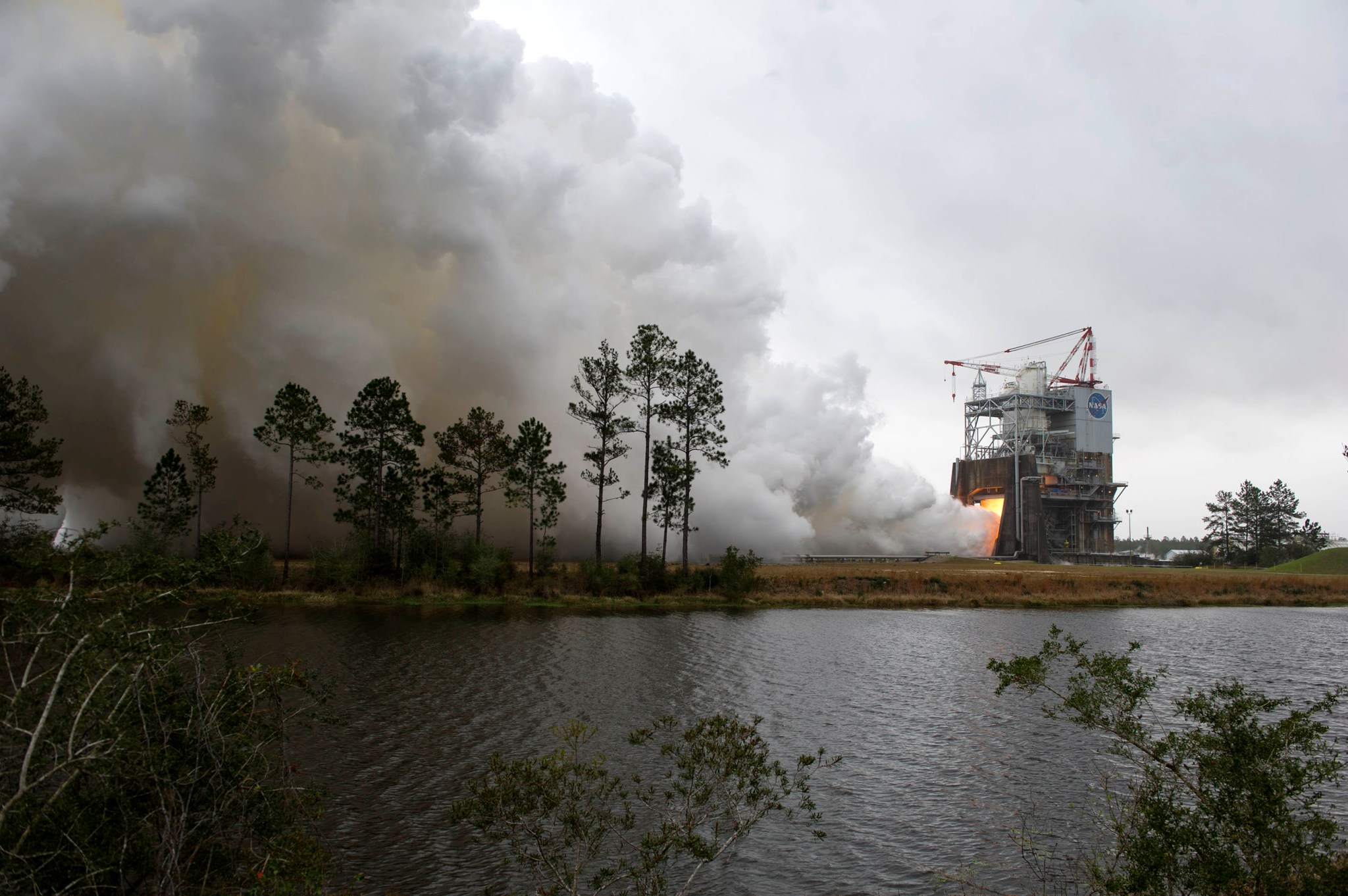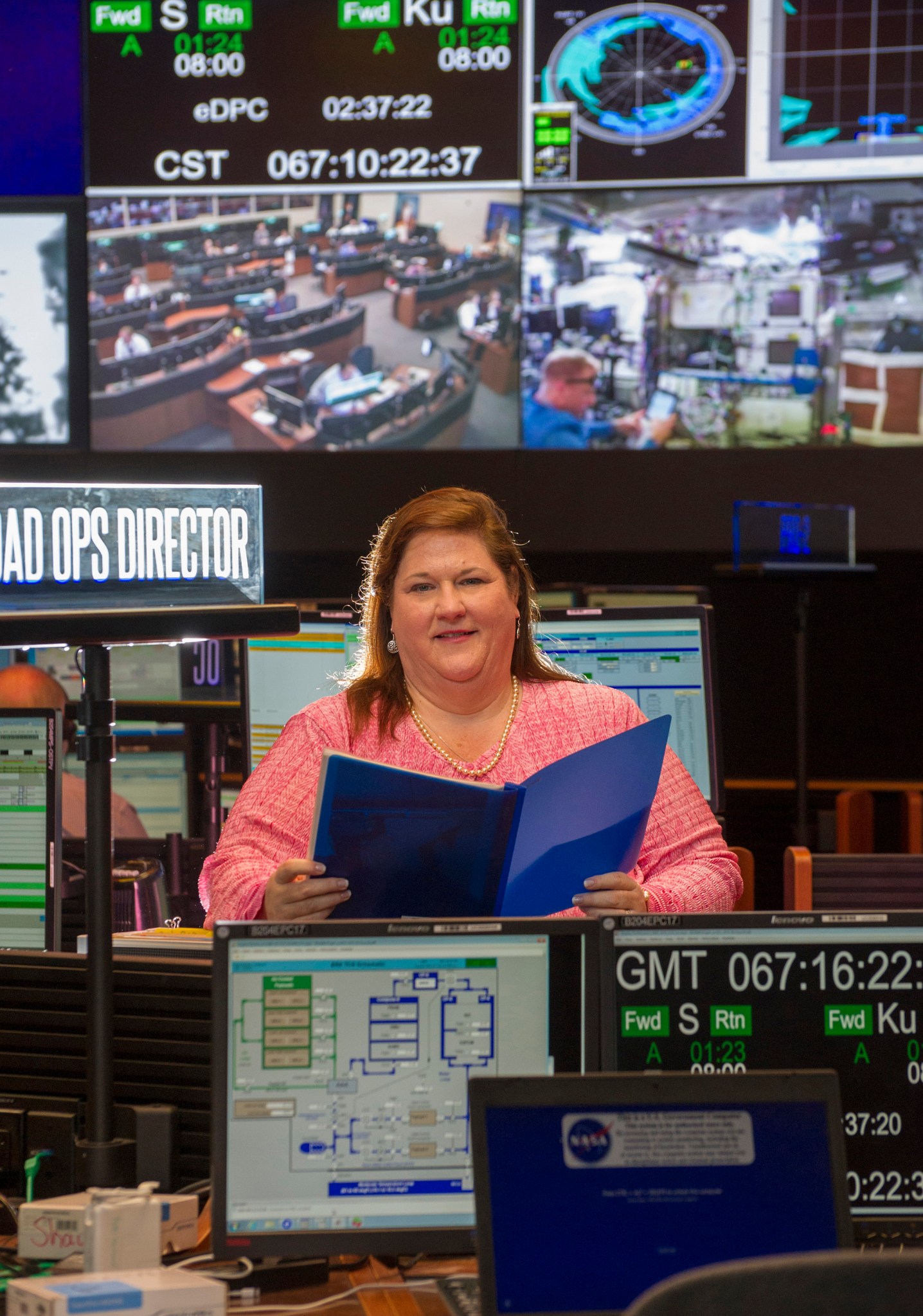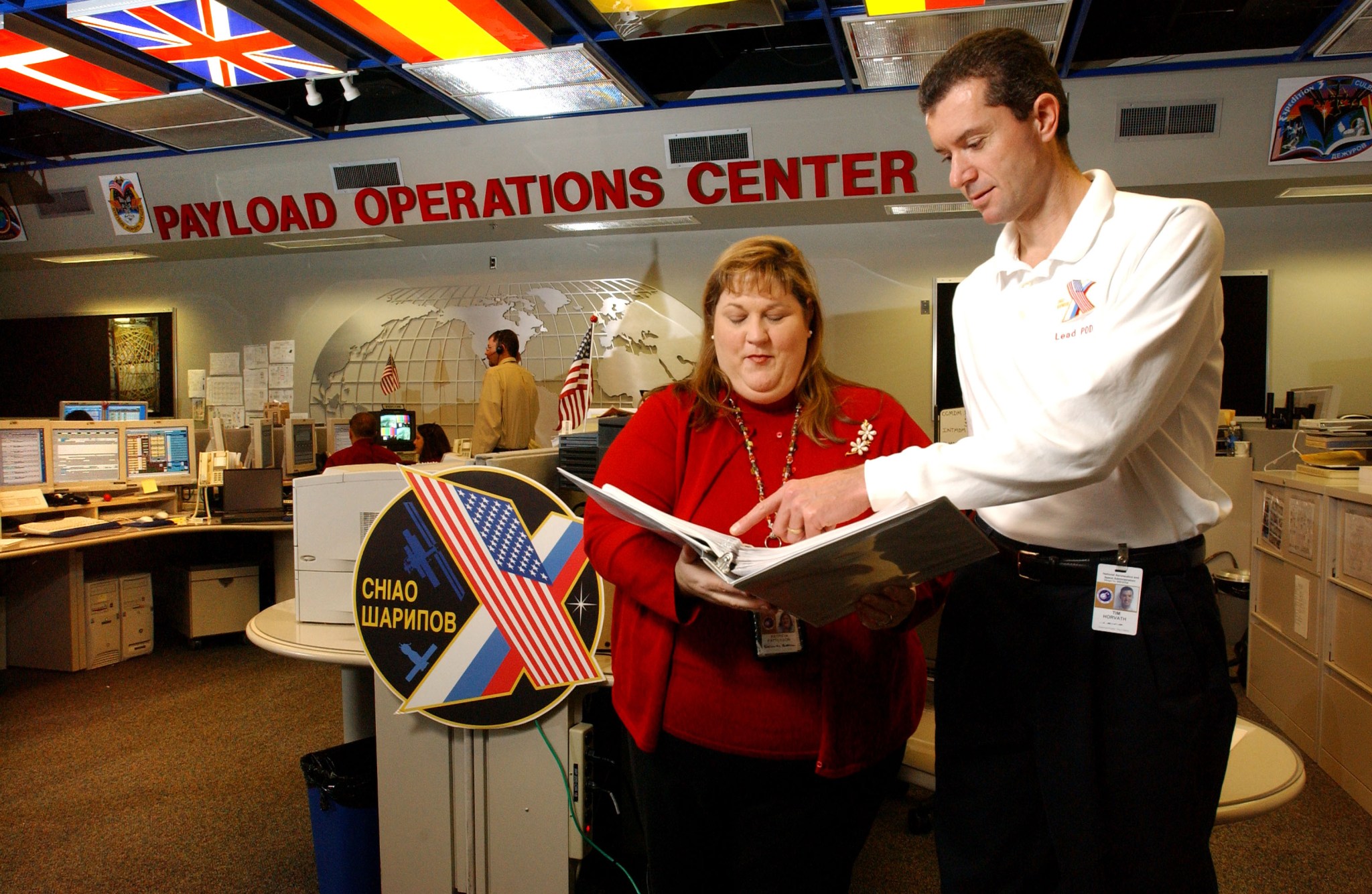In This Week’s Star
- Engine Test Marks Major Milestone on NASA’s Journey to Mars
- Payload Pioneer Pat Patterson Paves the Way for Space Station Science
- Marshall and Alabama Legislature Celebrate NASA and State’s Enduring Relationships
- Voltage Controllers: NASA Tech Helps Save Power and Money on Your Vegas Adventure
- This Week in NASA History: STS-29 Delivers Third Tracking and Data Relay Satellite — March 13, 1989
- Marshall Test Stand, RS-25 Engine Test, Total Solar Eclipse and New Dawn Images Featured on ‘This Week @NASA’
Engine Test Marks Major Milestone on NASA’s Journey to Mars
On March 10, NASA successfully tested a RS-25 flight engine for the agency’s new rocket, the Space Launch System. SLS will be the world’s most powerful launch vehicle and will carry the Orion spacecraft on deep-space missions, including to an asteroid and ultimately to Mars. The RS-25 flight engine was tested for 500 seconds and will be used on the first crewed SLS mission. Marshall manages the SLS Program for the agency. (NASA/Stennis)
Payload Pioneer Pat Patterson Paves the Way for Space Station Science
By Lori Meggs
Fifteen years may sound like a long time, but for Pat Patterson it seems like just yesterday that she first sat down at a console at NASA’s Marshall Space Flight Center and began talking to astronauts, helping them perform science experiments, or payloads, on the International Space Station.
Patterson was one of the first five people asked by NASA to be a payload operations director — to lead a team of flight controllers in a new facility called the Payload Operations Integration Center — created to control and monitor science on station around the clock.
Even though she had 20 years of experience at NASA supporting a variety of space shuttle missions, this was all new — the work, the people and even the space station, where astronauts had only been living in orbit less than a year.
This operations center was and still is “science central” for the station, and Patterson is among the handful who held the reigns.
“The room looked much like Mission Control at the Johnson Space Center, with computers and monitors as far as I could see,” said Patterson. “As I watched the experiment data pour through those monitors from space, I knew each day would be different, and the research we were accomplishing would be significant, not only to the crew, but to us on Earth as well.”
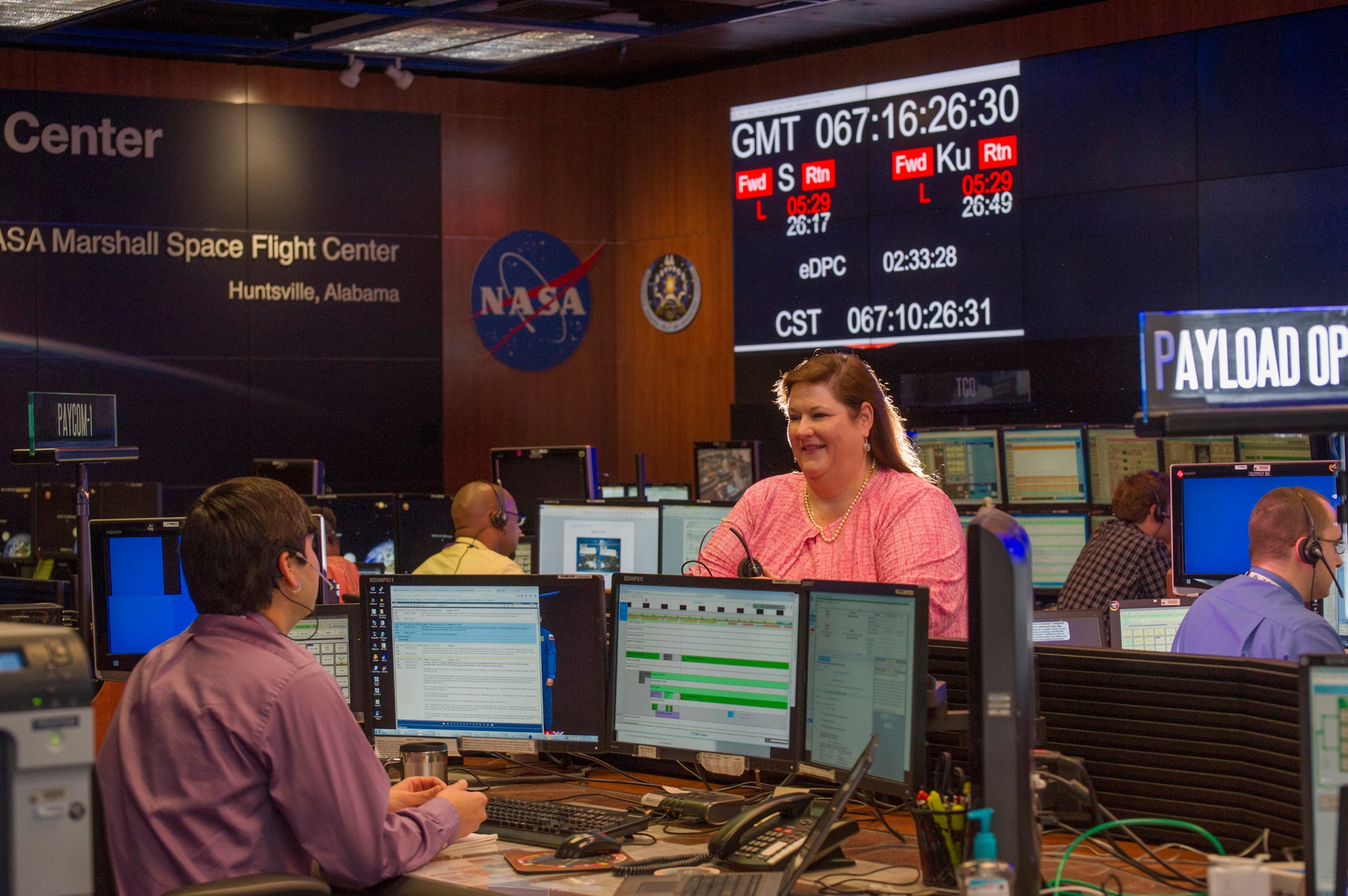
Over the years, the looks of the surroundings and, yes, the people, have changed – a renovated operations center, an increased number of crew members from three to six, and a handful of researchers has grown to hundreds around the world joining in the effort to improve life on Earth. But one thing hasn’t changed: Patterson’s dedication to her job and her appreciation to the people who helped shape her career.
When Patterson was a senior at Huntsville High School, her guidance counselor handed out applications to everyone in Patterson’s calculus and computer programming class for a scholarship through the NASA Cooperative Education Program, which provides opportunities for students to be considered for federal employment.
“One of the questions on the application asked what type of engineer you wanted to be. I was not very familiar with engineering at that point in my life, so I asked my teacher, and she said choose electrical engineering. I did, and I ended up earning the scholarship, and becoming a NASA co-op. I can’t thank my teachers enough for their encouragement and inspiration.”
In her 35 years at NASA, not only has she supported numerous science missions on the space shuttle, but maybe even more impressively Patterson has worked with every crew on the station since Expedition 2 in 2001 — when the POIC began 24/7 continuous support of station science.
“Pat has been a staple in the real-time world of shuttle and station payload operations,” said Sam Digesu, project integrator and former chief of the Payload Operations Directors Office in the Mission Operations Laboratory at Marshall. “She is a tremendous resource with a wealth of knowledge and an incredible influence in guiding us to where we are today.”
Patterson’s expertise has led her to helping pioneer the path forward for the Space Station Program. She’s part of the team for “RISE,” or Revolutionize ISS for Science and Exploration. It is a shift within the station program to change the way the global station community thinks about the orbiting lab. Right now, crews average 40 hours a week of research. When crews begin launching to station on commercial vehicles in a few years, the research time is expected to increase to around 100 hours a week.
“Spaceflight isn’t easy, but we have to make it easy for researchers and commercial companies to conduct science in space,” added Patterson. “What we do in the years we have left with this amazing vehicle and program will shape the future of human exploration. The power of the human spirit is exemplified by the space station, and I believe it should be recognized as the 8th Wonder of the World!”
Meggs, an ASRC Federal/Analytical Services employee, supports the Office of Strategic Analysis & Communications.
Marshall and Alabama Legislature Celebrate NASA and State’s Enduring Relationships
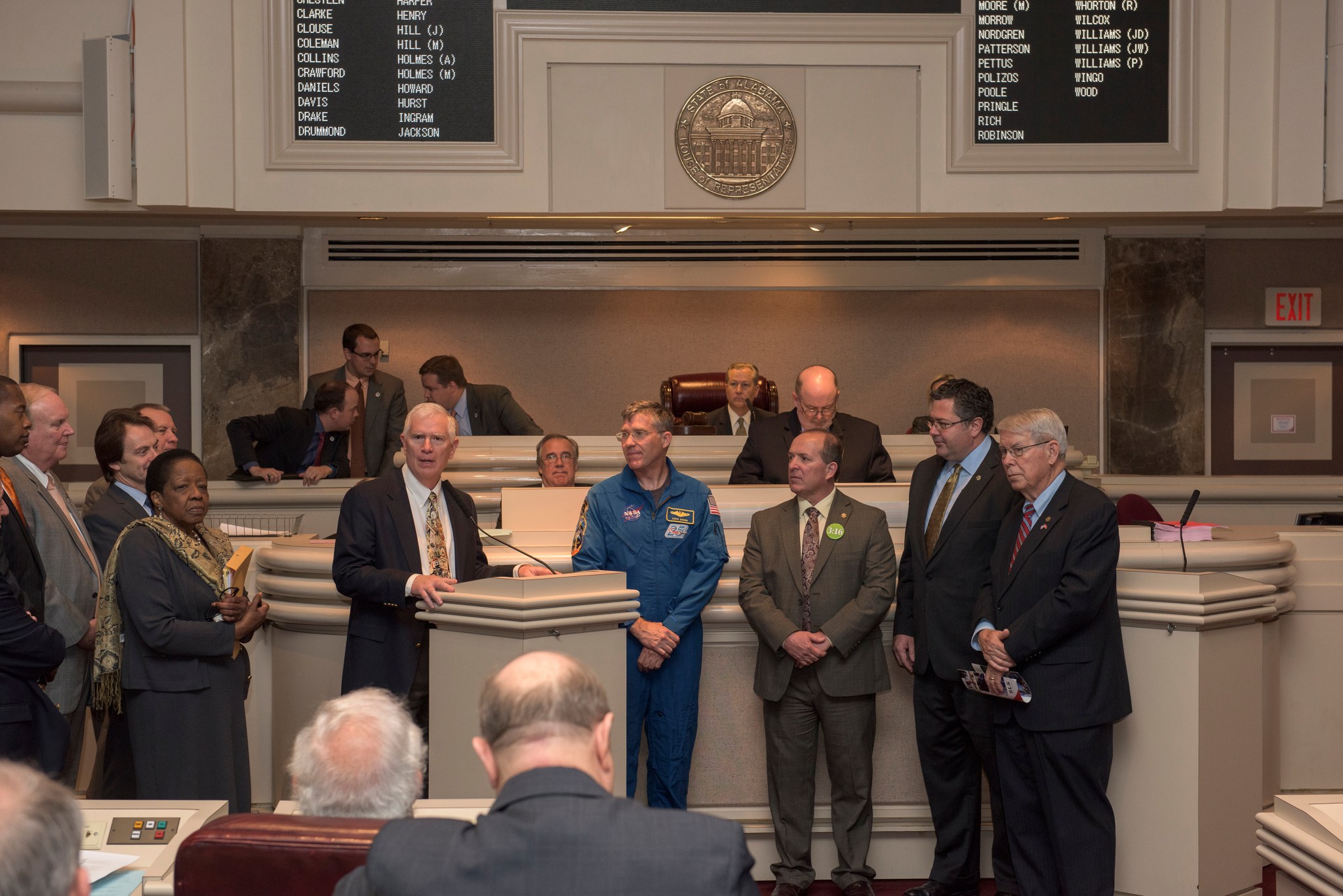
On March 10, the Alabama State Legislature and U.S. Rep. Mo Brooks, center, of the 5th Congressional District, welcome NASA Marshall Space Flight Center Director Todd May, second from right, and NASA astronaut Steve Bowen, fourth from right, to NASA Day at the Alabama State House in Montgomery. Members of the Alabama Legislature representing Madison County — from left, Anthony Daniels, Jim Patterson, Phil Williams, Mac McCutcheon and Laura Hall; Richie Whorton, third from right; and Howard Sanderford, far right — and Brooks recognized NASA and the state’s enduring relationship with the space agency. Marshall officials were at the capital March 8-10 during the Aerospace States Association’s Alabama Aerospace Week, to spread the word about Alabama’s role in NASA’s journey to Mars and to inspire the next generations of engineers, scientists and explorers. (NASA/MSFC/Fred Deaton)
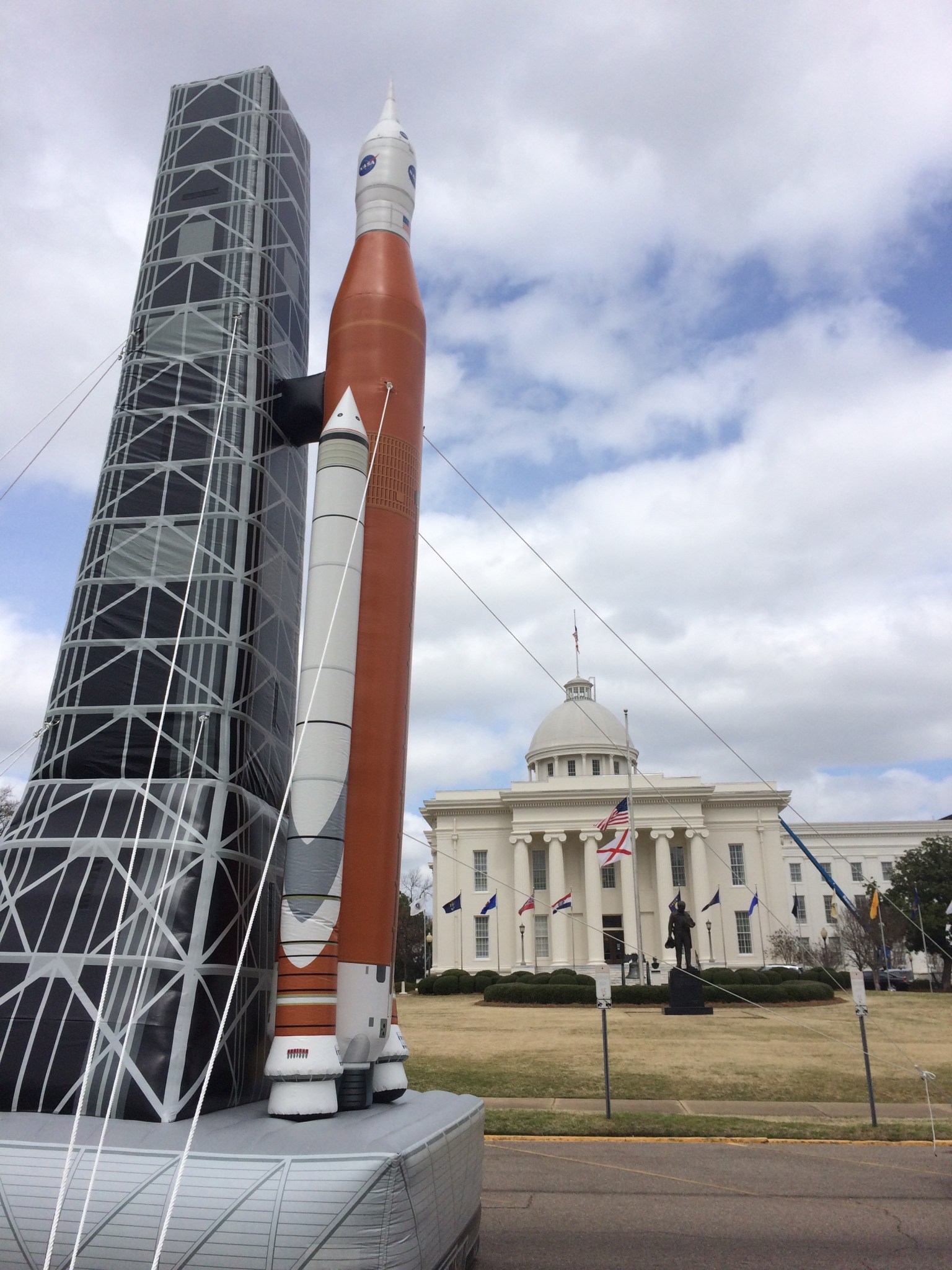
Interactive exhibits — provided by Marshall’s Office of Strategic Analysis and Communications Exhibits Team — lined Washington Street outside the State House and Capitol Building. Among the exhibits NASA’s Space Launch System, a moon rock from Apollo 15 and a RS-25 rocket engine — which will propel the SLS, the world’s most powerful rocket ever built for deep space missions and the only rocket designed to meet the challenges of the journey to Mars. NASA team members — including members from Marshall’s Academic Affairs Office — also visited Montgomery-area schools and the W.A. Gayle Planetarium in Montgomery, engaging students in science, technology, engineering and math activities. (NASA/MSFC/Brian Massey)
Voltage Controllers: NASA Tech Helps Save Power and Money on Your Vegas Adventure
By Will Bryan
After days of driving, the bright lights of Las Vegas shine before you like a beacon through the darkness. As you drive down the Las Vegas Strip, you stare at the lights, shades of every color imaginable, and watch people celebrating jackpots and commiserating loses. Hotels and casinos of every shape reach toward the heavens in your steel-and-concrete canyon, and the fountains of water outside them could put Yellowstone’s Old Faithful to shame.
You check into your hotel and, without a second thought, join the crowd aboard one of the hotel’s spiral escalators, excited to start your adventure in the “City of Lights.” Little do you know, inside that moving staircase is an energy-saving device created by a NASA engineer who helped humanity take the greatest adventure of all.
Frank Nola, now retired, was an engineer at NASA’s Marshall Space Flight Center where he helped develop the lunar rover for the Apollo program. In the 1970s, he used his expertise in electronics to create the voltage controller, commonly known as the Nola device, or the power factor controller. The device, first patented in 1984, has been commercialized and is in motors of appliances and tools used every day, including escalators — saving energy, money and wear on machines.
To understand how voltage controllers work, let’s return to the car you used to get to Las Vegas. After starting the engine, you put your car into first gear and start off down the road. The automatic transmission shifts gears so your engine puts out power efficiently, even though it is experiencing different loads. You are on your way to The Strip, and your transmission keeps your car’s engine purring like a caged tiger to make sure your gas gets you there. Keeping that system in mind, let’s look at that escalator carrying you to the promise world of nickel slot machines.
Operating the escalator is an induction motor — an alternating current electric motor that works by producing torque from electromagnetic fields. The motor is always drawing power — the product of voltage and current. During periods of high load on the motor — a full load of people on the escalator for example — the motor will draw a large current. Prior to the creation of the power factor controller, when loads on the motor were minimal, the motor was still pulling a large current, thus drawing more power than was actually needed to operate. The extra, unneeded current was waste — much like the energy your car engine expends during highway cruising in first gear.
The solution is a device integrated with induction motors that monitors power. Like an automatic transmission, when loads are minimal, voltage controllers cut the voltage which in turn reduces the current drawn until more power is needed, significantly decreasing energy waste. These energy savings result in cost savings due to lower electricity use and extended mechanical longevity.
Just as machines, electronics, spacecraft and the Las Vegas Strip evolved over the past three decades, so have Nola devices. Once found primarily in escalators and similar large machines, they are now in everyday life, in countless homes and businesses alike. From machines that help pave streets to moving sidewalks inside hotels, casinos and airports, to refrigerators that keep drinks nice and cold, Nola devices and the expertise of the men and women of Marshall are with you, enabling you to go on the adventure of a lifetime.
If you believe that a technology you’ve been working on has potential to improve lives here on Earth, submit a New Technology Report.
As Terry Taylor, manager of Marshall’s Technology Transfer Office explains, “Every year the agency makes thousands of technologies available to industry. These technologies generate revenue, create jobs, save lives and show a clear return on investment for the nation’s space program.”
Bryan, an ASRC Federal/Analytical Services employee, supports the Office of Strategic Analysis & Communications.
This Week in NASA History: STS-29 Delivers Third Tracking and Data Relay Satellite — March 13, 1989
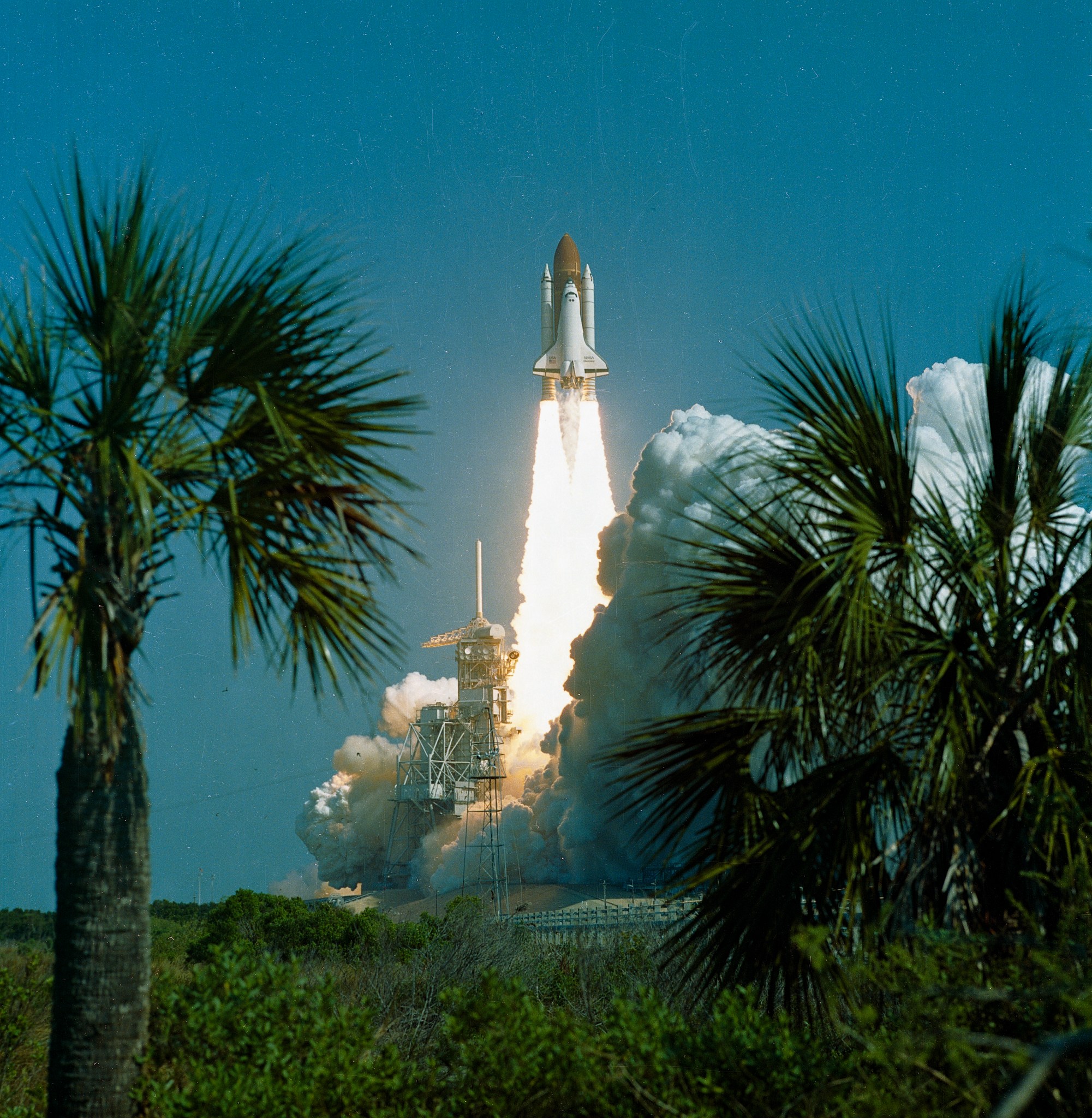
This week in 1989, STS-29 launched aboard space shuttle Discovery to deliver the Tracking and Data Relay Satellite-D. The third successful launch of the Tracking and Data Relay Satellite series, TDRS-D was used in combination with other TDRS spacecraft and a ground communications system to form the Tracking and Data Relay Satellite System. The prime goal of the TDRS system was to provide continuous communication services to NASA’s most critical low-Earth-orbiting missions and improve the amount of data received. The NASA History Program documents and preserves NASA’s remarkable history through a variety of products — photos, press kits, press releases, mission transcripts and administrators’ speeches. For more pictures like this one and to connect to NASA’s history, visit the History Program’s Web page. (NASA)
Marshall Test Stand, RS-25 Engine Test, Total Solar Eclipse and New Dawn Images Featured on ‘This Week @NASA’
A major construction milestone for a Space Launch System test stand, the test firing of the RS-25 engine, a unique total solar eclipse and new images from the Dawn spacecraft are all featured in the latest edition of “This Week @NASA,” a weekly video program broadcast nationwide on NASA-TV and posted online.
On March 4, construction crews at NASA’s Marshall Space Flight Center “topped out” Test Stand 4697, welding the structure’s top-most beam into position. The 85-foot-tall test stand is one of two being built to test hardware for SLS — NASA’s next deep-space exploration rocket. The test stand will use hydraulic cylinders to subject the liquid oxygen tank and hardware of the SLS core stage to the same conditions they will experience during launch. Another test stand — 4693 — will be used for similar testing on the core stage’s liquid hydrogen tank. Both stands are scheduled for completion this year. SLS will be the world’s most powerful rocket, able to ferry astronauts on deep-space missions in NASA’s Orion spacecraft to Mars, an asteroid and beyond.
On March 10, engineers at NASA’s Stennis Space Center test fired RS-25 engine number 2059, the first flight engine to be tested for SLS. The former space shuttle main engines are being upgraded to meet requirements for SLS. Four RS-25 engines will power the new rocket’s core stage. This flight certification test is a major milestone in NASA’s return to deep space exploration and the journey to Mars.
On March 8, a total solar eclipse occurred, visible only in parts of Southeast Asia. To share the event with people around the world, NASA collaborated with the Exploratorium Science Center in San Francisco and the National Science Foundation to broadcast live coverage from Micronesia on NASA-TV. To promote the event and raise awareness of the science research involved with an eclipse, NASA conducted several social media events, including a Facebook chat hosted by Marshall and one of its expert solar astronomers. The next total solar eclipse visible from the United States will occur on Aug. 21, 2017, passing over most of Tennessee.
The Dawn spacecraft celebrated its one-year anniversary of arrival at the dwarf planet Ceres by beaming back new images of Ahuna Mons — the mysterious 3-mile-high mountain investigators initially thought was pyramid-shaped. However, subsequent and more detailed images revealed the mountain was actually shaped like a dome. These latest images of Ahuna Mons — taken 120 times closer than in February 2015 — are helping researchers learn more details about the mountain. Dawn’s arrival at Ceres March 6, 2015, made it the first-ever spacecraft to reach a dwarf planet. Dawn is part of the Discovery Program, which is managed by Marshall for NASA’s Science Mission Directorate.
View this and previous episodes at “This Week @NASA” or at https://www.youtube.com/user/NASAtelevision.



























